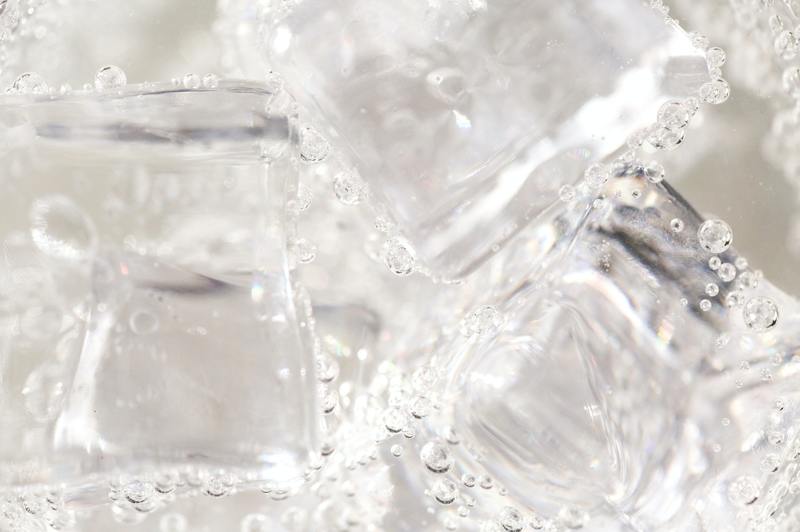Molds are now entering every nook and cranny, and it’s no longer a surprise that you need to know how to clean mold from ice dispenser. While these molds predominantly existed in wooden and organic material, they’ve now somehow evolved with us and are even present in your plugged things.
Molds need certain conditions to be able to thrive in a particular location. They need enough moisture, away from the sunlight and anything too hot, with enough organic sustenance to latch on to reproduce and continue spreading.

As for your ice dispenser, its internal parts are definitely stored away from sunlight, with limited to no surface that heats up. There is enough moisture there, and if, for some reason, something that can be decomposed makes it in there, then you might want to check for molds right now.
Steps For Cleaning Mold In Your Ice Dispenser
Molds in your ice dispenser can grow on almost all of its surfaces. We’re sure that you would still want this dispenser to keep on working after cleaning, so you should wear proper PPE and follow these steps to safely remove the mold infestation.
Step #1. Unplug your machine and empty its contents
Before you start working, make sure that you’ve turned off your machine first, then detach it from the power source. This way, you won’t be faced with the unnecessary danger of getting electrocuted along the process, and you can also protect the dispenser’s parts from short circuits in the case that they get wet.
After unplugging, drain all the water out from your ice dispenser, and recover all the ice cubes already made. You can reuse these if you still deem them safe for consumption.
Also, detach all the removable parts, so you can check whether there’s any hidden and unseen mold colony. It should be easy to figure out how to open the other screwed-on parts, so you should also open these for cleansing.
If you’re not confident, you can leave their maintenance to certified technicians. Here’s how to write a mold report for their visit.
Step #2. Mix a vinegar solution and wipe down the dispenser
Since your dispenser is moist when it’s making ice, the mold colony mess that you need to clean up is likely mushy and wet. If not, you should vacuum the molds before wiping them off since the spores can fly off, which is dangerous when inhaled.
If the molds are wet, though, you can proceed to prep your mold-killing solution. You can use vinegar mixed into an 80% solution if it’s acetic acid.
However, you can use lemon in about 50-60% since it’s a slightly stronger acid.
Soak up a sponge with your solution, then wipe off all the surfaces of your dispenser. Make sure your sponge always contains a generous amount of your solution since wiping off the molds doubles as removal and killing in one sweep.
This is also why you should wipe even the parts where you don’t see mold. If there are fresh and ungerminated spores there, they would no longer be able to start a new colony right after you finish cleaning.
Step #3. Wash the vinegar off with soap
After wiping off the molds, you’ll need to remove the vinegar so it doesn’t get absorbed by your ice dispenser, which might later find its odor and taste mixed with the ice. Use a different sponge soaked with dishwashing soap solution to go through all the surfaces, including the awkward spots.
If you’re not confident whether the vinegar and soap have thoroughly wiped off all the molds in your dispenser, you can use a 10% bleach solution to wipe through it. Bleach is way stronger than either vinegar or lemon but is poisonous in most cases, so you need to soap it up again after application.
Step #4. Properly rinse and dry your ice dispenser
After cleaning off the mold, the next step is the most significant for your safety. Rinse the ice dispenser thoroughly with warm tap water, enough to remove all the soap, vinegar, bleach, and any other solution you may have used.
Make sure you avoid splashing water into the dispenser lest you risk wetting its electronic parts. When you think the rinsing is sufficient, you need to dry up all the dispenser features with absorbent towels.
Will ingesting molds from an ice dispenser make you sick?
Reaction to mold, ingestion, and contact can depend on whether you’re allergic and what type of mold you have. Some of them cause rash, upset stomach, and loose bowel movement when taken in high amounts.
You’ll probably immediately notice if there’s mold on anything you’re eating, or drinking for this matter, with its taste. Most of the time, they taste bitter, with a dusty flavor, and can also smell off.
If you’re mindful enough, you should be able to tell if there’s mold before you can ingest too much of it.
If molds frequent your home too often, they might have infested other electronics too. Here’s an article on how to prevent mold in the refrigerator, in case they’ve gone there as well.
Conclusion
Now, you finally learned how to clean mold from ice dispenser at home! If you pay attention to the dispenser’s maintenance regularly, you’ll have fresh and clean ice all the time.
